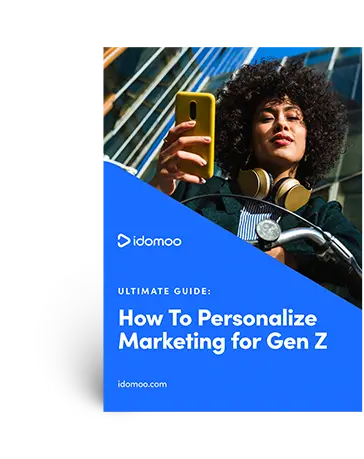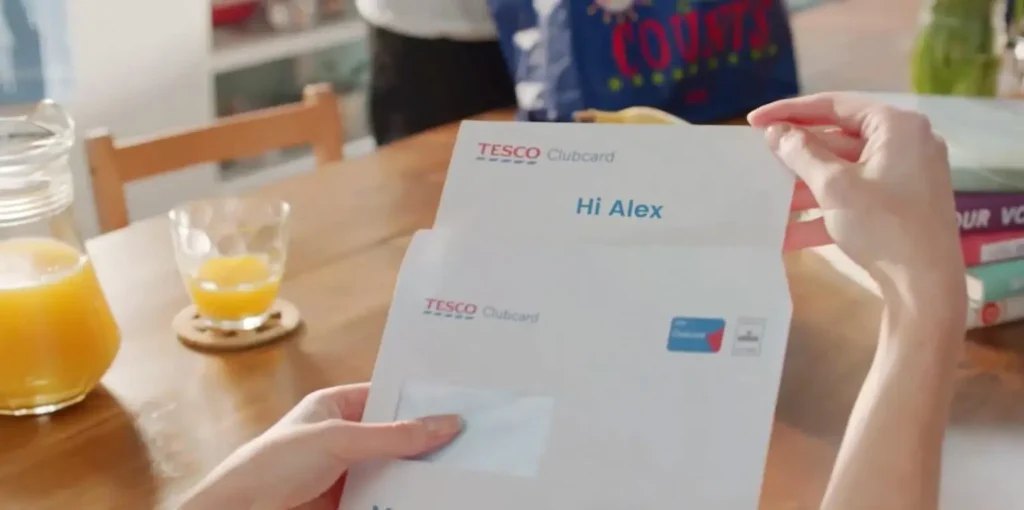Today’s consumers are no longer easily impressed by generic marketing efforts. Having grown used to seeing their name in an email or getting a discount code on their birthday, they expect a higher level of attention and service. This is where hyper-personalized marketing comes in.
While personalization has been a staple in marketing for years, hyper-personalization takes it a step further. Basic personalization might include addressing a customer by their first name but hyper-personalization goes deeper by incorporating numerous data points to deliver a truly one-in-a-million customer experience.
As consumer expectations continue to evolve, brands that don’t embrace hyper-personalization risk falling behind. To help you navigate this shift, we’re diving into the key differences between personalization and hyper-personalization, so you can start crafting experiences that don’t just meet but exceed today’s demands.
First up? Let’s set the foundation by defining personalization.
Understanding Personalization
Traditional personalization involves using simple data points about a customer to create an individualized experience. The aim is to be relevant and connect more personally with the customer by acknowledging their preferences and previous interactions with a brand.
Here are a few common examples:
- Using a customer’s first name in email marketing campaigns
- Segmenting email lists based on demographics (age, location, gender) or user behavior (purchase history, browsing patterns)
- Recommending products based on past purchases, like extra lenses or camera bags for someone who buys a camera
While these tactics can be effective, they do have their limitations. Traditional personalization typically relies on static data and broad segments, which can make the messaging lack depth and relevance.
For instance, using only a customer’s name or past purchase history doesn’t account for real-time behavior, changing preferences or broader context. After all, a customer’s interests might shift rapidly based on new trends or life events. This can lead to irrelevant product recommendations or communications that miss the mark, causing consumers to disengage.
Modern consumers, accustomed to the personalized experiences offered by major brands like Netflix and Amazon, expect more sophisticated interactions. They can easily see when a company is merely using surface-level data rather than genuinely understanding and anticipating their needs in real time.
To meet modern consumer expectations, businesses need to evolve from basic personalization to hyper-personalization.
Enter Hyper-Personalization
Unlike traditional personalization, which mostly relies on static data or customer segmentation, hyper-personalization analyzes real-time data to create a user experience that’s truly unique.
At the heart of hyper-personalization are artificial intelligence, machine learning and data analytics. These advanced technologies analyze vast amounts of data — such as browsing habits, purchase history and even real-time behavior — to identify patterns and insights that help businesses better understand and predict customer needs.
From there, brands are able to adjust their messaging, offers and interactions dynamically, ensuring each touchpoint is as relevant and engaging as possible. Remember, this doesn’t just involve addressing users by name — it’s about creating an entire experience that feels personal and engaging from start to finish.
So what would this look like? Let’s say you have a mobile app that presents workout content to individual members.
Traditional personalization would consider just a few data points. For example, if a user enjoys Pilates videos, you might send them the most popular Pilates workouts. It’s helpful, sure, but not exactly unique — anyone with a similar interest would see the same suggestions.
The hyper-personalization approach, on the other hand, would involve creating customized exercise plans based on a deep analysis of much more data, such as the member’s fitness goals, past performance, preferred workouts and so on. Each workout plan should be so finely tuned to the individual that no two members will have the exact same experience.
What’s more, hyper-personalization is dynamic, adjusting to real-time customer data. If a member’s performance improves, the workout recommendations adapt to keep them challenged. If their preferences change, so do the suggestions, ensuring that only relevant content is presented.
In essence, hyper-personalization works by turning every interaction into a uniquely personal experience. This meets modern consumer expectations for highly tailored experiences, letting brands forge deeper connections and drive better business outcomes.
3 Examples of Hyper-Personalization in Action
Now let’s dive into what hyper-personalized experiences look like in the real world. From digital marketing campaigns to customer support interactions, brands can now personalize most touchpoints in the customer journey. Here are 3 powerful examples that show how it’s done.
1. Spotify
Spotify Wrapped is a prime example of hyper-personalization in action. Every year, the streaming giant analyzes heaps of historical data, including listening habits, favorite genres and top tracks, and curates a year in review for each user.
Why does it resonate so much? Because Wrapped goes beyond basic personalization. With so many stats incorporated, each report is genuinely one-of-a-kind. This level of personalization strengthens customer relationships, making users feel special and appreciated. Plus, it’s a brilliant way to generate buzz, with millions of people sharing their Wrapped on social media.
2. Orangetheory Fitness
Orangetheory Fitness nailed hyper-personalization with its end-of-year recap campaign. Analyzing over 2.2 million data points — including members’ BPM, burned calories and completed challenges — the fitness brand was able to create engaging, data-driven videos for hundreds of thousands of its members.
No two recaps were the same. Each one was a unique combination of personalized audio tracks, individual achievements and more. The result? Orangetheory effectively celebrated its members’ hard work while also strengthening their connection to the brand. Over 45,000 additional classes were booked and the brand achieved its lowest attrition rate in 5 years.
3. Select Health
Healthcare is one of those fields where hyper-personalization isn’t just nice — it’s essential. Considering the complexity and confusion that often surrounds healthcare decisions, receiving relevant and timely information can make all the difference.
Imagine getting a notification about your Medicare eligibility, delivered at the perfect time of day when you’re most likely to engage with it. That’s the kind of thoughtful communication Select Health is delivering.
The video below walks viewers through Medicare eligibility, enrollment and plans with clear explanations and helpful visuals. But what really sets it apart? The content is tailored specifically to the viewer, in this case, “Christopher.” This means that every piece of information is relevant to his individual situation, making the experience not just informative but truly valuable.
Need a little more inspiration to refine your hyper-personalization approach? Check out these hyper-personalization examples from brands that got it right.
Making the Most of Hyper-Personalization
We’ve explored the differences between personalization and hyper-personalization — but what can hyper-personalization actually do for your business?
In harnessing advanced AI algorithms and real-time data, hyper-personalization unlocks plenty of opportunities to enhance metrics that are critical to your business. Here’s what you could do:
- Boost customer engagement. When customers see content that resonates with their specific needs and interests, they’re more likely to interact with your brand, whether through clicks, shares or time spent on your site. For instance, we’ve seen our clients achieve up to 10x higher engagement with Personalized Video.
- Improve conversion rates. When you use hyper-personalization to tailor your messaging and offers, you’re speaking directly to what your customers want. This precise targeting leads to higher conversion rates, as customers are more likely to take action when they feel understood.
- Increase customer satisfaction. Delivering the right message at the right time can have a huge impact on customer satisfaction. This level of attentiveness is valued by customers, resulting in higher satisfaction rates and positive brand perception.
- Strengthen customer loyalty and retention. Over time, hyper-personalization efforts build upon themselves, leading to more and more relevant experiences that drive loyalty. According to McKinsey & Company, consumers are 78% more likely to make repeat purchases from companies that personalize, as well as refer them to friends and family.
Post on
Of course, with opportunities come challenges. As you craft your hyper-personalization strategies, it’s essential to consider the ethical implications, particularly around privacy and data security. While 73% of all consumers will share their data if it means they’ll get a more personalized experience, respecting and protecting their information is non-negotiable.
Brands need to ensure that they’re transparent about how they collect and use data, providing customers with control over their information. As more consumers become concerned over data theft and misuse, balancing the benefits of hyper-personalization with transparent data practices will be key to maintaining trust.
Maximize Your Impact
We’ve covered a lot of ground in exploring the world of hyper-personalization and its impact. As we wrap things up, let’s spotlight one of the most powerful tools in this space: Personalized Video.
When it comes to engagement, there’s nothing quite as captivating as video. This blog itself uses video to bring our points to life because it’s one of the most engaging and demonstrative formats available. Now imagine combining that format with hyper-personalization.
Whether you’re a retailer looking to boost customer loyalty or a gaming brand aiming to engage your players, incorporating hyper-personalized video can take your marketing strategy to the next level.
But let’s be real: Creating millions of hyper-personalized videos is no easy feat. You need a powerful platform that helps you utilize data effectively and produce cinematic quality videos at scale. Idomoo can help. Our platform streamlines the creation of personalized content, making it easy to deliver high-impact video experiences to every individual customer.
Want to see it in action? Reach out for a free demo and let us show you how we can help your brand achieve its goals.







